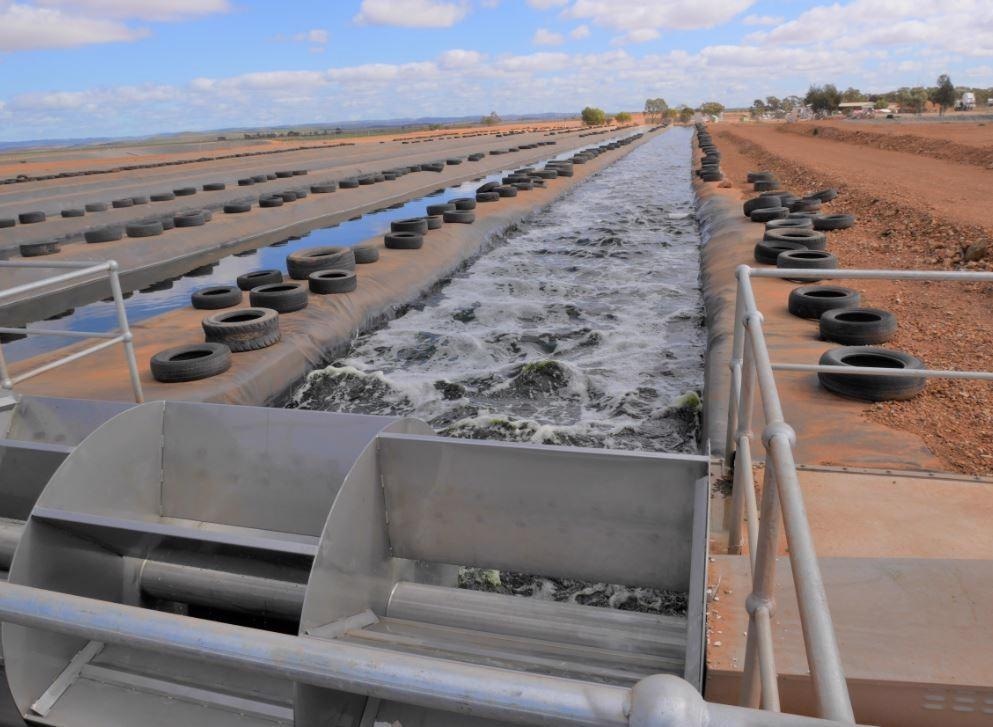Environmental health experts at Flinders University are advancing research into a highly sustainable wastewater recycling program by developing a cost-effective way to harvest microalgal biomass for use in biofuels and other applications.
 The HRAP system operating at Peterborough in South Australia's arid north. Image Credit: Flinders University
The HRAP system operating at Peterborough in South Australia's arid north. Image Credit: Flinders University
The high-rate algal pond (HRAP) model, recycling wastewater at two regional South Australian locations at Kingston-on-Murray and Peterborough, uses algae and bacteria to treat the wastewater.
Research led by Flinders University Professor Howard Fallowfield and Dr Paul Young has presented details of a new system using slaked lime and magnesium concentration to concentrate the microalgae-rich biosolids produced in the HRAP at Kingston-on-Murray in SA’s Riverland.
Chemical reaction modelling was used to optimise the processing and the cost of chemicals was evaluated.
“This autoflocculation process was successful in harvesting the biosolids while significantly reducing the turbidity, nutrients and E. coli contamination left in the wastewater,” says lead author Dr Young, who completed a PhD at Flinders University.
These sustainable, low-energy systems are cost effective to run, and the capital cost of construction is about 40% of the previous system for effluent-only schemes, and marginally higher for blackwater schemes, the Flinders University research has shown.
While a conventional system requires 66 days to treat the wastewater, HRAPs can perform a similar level of treatment in 5-10 days. Its ability to remove pathogens is equal to, or better than, existing wastewater systems, Professor Fallowfield said after an earlier Flinders University study compared the Loxton-Waikerie District Council trial site at Kingston-on-Murray with a conventional system.
Professor Fallowfield says the study for the first time shows the HRAP wastewater treatment system could also be used to efficiently harvest microalgae grown in a low-cost environment – without the need for further investment in expensive infrastructure.
“The integration of treatment and biosolid recovery offers new configurations for the operation of HRAP-based wastewater treatment systems,” he says.
The article, Autoflocculation of microalgae, via magnesium hydroxide precipitation, in a high rate algal pond treating municipal wastewater in the South Australian Riverland (2021) Paul Young, Jordan Phasey, Ilka Wallis, Dries Vandamme and Howard Fallowfield has been published in Algal Research (Elsevier) DOI: 10.1016/j.algal.2021.102418
Acknowledgements: The authors have no conflicts of interest and thank the Local Government Association of SA, Loxton Waikerie District Council and Power and Water Corp, NT.